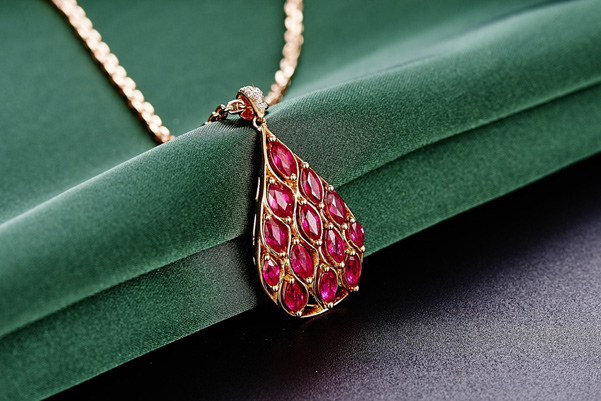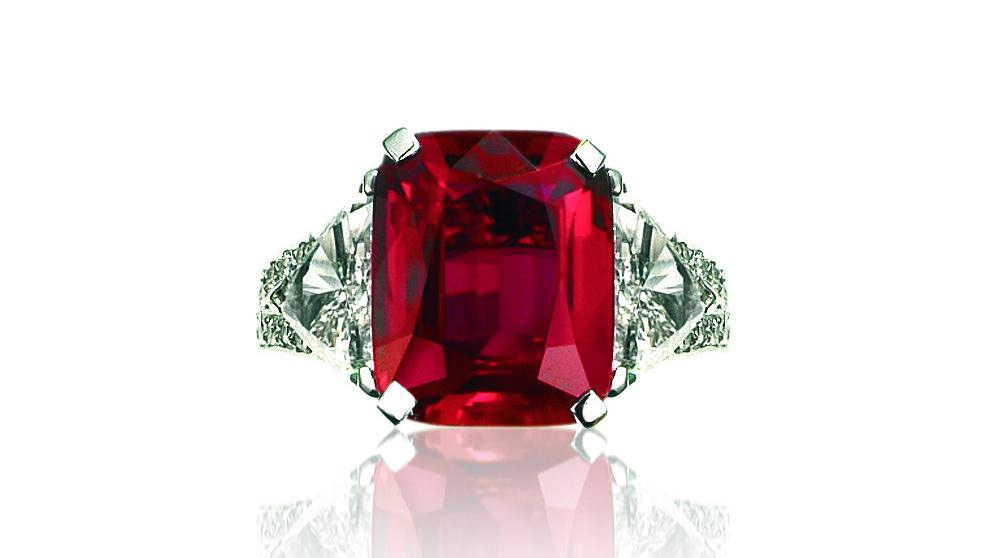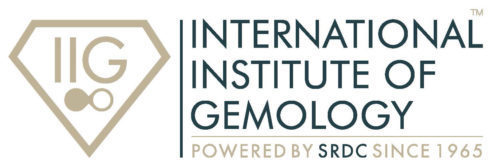Introduction
The word ruby originates from the Latin word ‘ruber’, which means red. For some ruby is a representation of the sun; to others, it represents love, passion, integrity, courage, prosperity, and healing. For many years, this gemstone has been a prized possession of the emperors and kings. The color of the stone is the most important feature of this gemstone. Even today, ruby is said to be the most valued gemstone.
History
The history of ruby ties back to a story, rich in splendor and mystery. This precious gem has been mentioned in Bible, adorned by the royalty throughout human history, and believed to protect the ancient warriors on the battleground. According to legends, these warriors implanted rubies under their skin to bring valor in the battle. As a talisman, ruby would warn its wearer against the approaching disasters or dangers.
In England, it was used for coronation rings and to this day enjoys popularity among royalty. Fergie, the Duchess of York received a ruby engagement ring from Prince Andrew. Experts and professors globally are yet to confirm and settle on a precise explanation for how rubies are formed. It’s known that ruby is, in essence, a type of corundum, which is colorless itself when pure, and takes the red color when introduced to chromium. The conditions needed to create these gems are so rare that a definitive explanation for their formation still remains elusive.
Today, some of the most famous rubies in history can be found in the collections of the world-class museums like Louvre that also houses the Anne of Brittany Ruby, and the famous Smithsonian, home to the 23.1 carat Carmen Lúcia Ruby. With complete certainty, rubies have been one of the most precious gemstones in existence, commanding the high price per carat of any other gem. Even ancient civilizations recognized their
value which brings us to the Sanskrit word for ruby, “Ratnaraj” that translates to “King of precious stone”.

Characteristics
The color of the gemstone, ruby, ranges from deep cochineal to pale rose red, in some cases with a tinge of purple. The gemstone gets this red color from the replacement of a small number of aluminum atoms by chromium atoms (1 in 5,000). These impurities are often responsible for causing a ruby to fluoresce, which can be helpful in its identification. The gemstone being pleochroic, also sometimes displays a lighter and more intense color when viewed at different angles.
The most valuable and the brightest ruby is often a ‘Burmese Ruby’, which indicates that it is rich, passionate, hot, and fully red with a slight hue of blue. This color is often referred to as ‘pigeon blood’ red, a color of ruby only associated with the Mogok Valley mines in Myanmar. This color is associated with the color of a white pigeon’s eye.
High refractivity is a characteristic of ruby when it is cut and polished; but, due to its weak dispersion, the gemstone lacks fire. When exposed to a high temperature, ruby becomes green and regains its original color upon cooling. Ruby phosphoresces with a vivid glow when it is subjected to radiant discharge. This gemstone is well-known for its toughness and durability. Despite this, ruby is still prone to be chipped or fractured if handled roughly.

How should one wear it
The purposed day and time to wear the ruby stone is Sunday morning in the index finger of the right hand. The most suited setting to wear this stone is ideally with gold or diamond rings. The stone should be fixed on the ring in a way that it often touches the skin of the wearer to stir its astrological properties in the life of the wearer.
Today, rubies have numerous applications that go beyond jewellery. They are applied as styluses in turntables, as tiny bearings in the expensive wristwatches, and they form a crucial component at the laser’s core in the rod form. Since ruby represents romance and devotion, it is an excellent choice for an engagement ring. It is the traditional wedding anniversary gift for a couple’s 15th and 40th year.
Rubies are hard and durable, they are easy to care for; however, it is not advisable to wear a ruby if you are doing any rough work or are in constant contact with harsh chemicals. The best way to store rubies is in a fabric-lined box, away from the other jewellery as they may scratch other, softer gemstones.
While cleaning rubies, you can either use soapy water and brush or a commercial jewellery cleaner. Post this cleaning, it becomes extremely important to rinse the stone thoroughly and dry it. With proper care, the stone will stay with you and retain its beauty for years to come.

